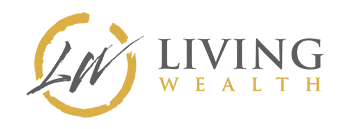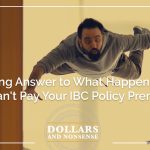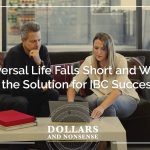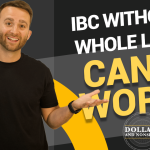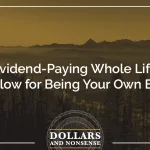One of the most common questions we receive from our clients is what happens if I can’t pay my premium? In this episode, we review and explain the different ways a policy can pay for itself and what options make the most sense depending on your circumstances.
Infinite Banking Concept Whole Life Premium Topics Discussed:
- How long do you normally want to be putting money into premium?
- What is the least timeframe to see dividends and benefit from compounding interest?
- How to understand when something is not a true liability or money loss from payment
- Why your money should always be in motion rather than stagnant
- When to use an automatic premium loan
- Can an IBC Policy pay for itself?
- How long do we typically pay a premium?
- How should we consider premiums?
- What are the options if I do need the policy to pay for itself?
Episode Resources:
- Gain access to our Secret Banking Masterclass now FREE to listeners of the podcast here now
- What is Infinite Banking
- Infinite Banking Glossary of Terms
- Who was Nelson Nash?
- CREDIT: Episode art background photo by Magnet
Transcript: What Happens When You Cannot Pay Your Infinite Banking Concept Whole Life Premium
Dollars and Nonsense: Episode 129 Transcription
Nate: One of the most common questions we receive from our clients is what happens if I can’t pay my premium? In this episode, we discuss the different ways a policy can pay for itself and what options make the most sense depending on your circumstances. She’s Holly and she helps people find financial freedom.
Holly: He is Nate. He makes sense out of money. This is Dollars and Nonsense. If you follow the herd, you will be slaughtered.
Nate: All right. Today we’re going to tackle a common question that we get. Something that goes through all almost everyone’s mind. I think, at some point in their [inaudible 00:00:45] making the journey, which is what should I do if I can’t pay a premium or maybe even I no longer want to put a premium in. I guess that would be the question too, Holly. How long do we normally want to be putting money into premium and so forth?
So real this podcast is going to be focused on how does a policy pay for itself? How long do we typically pay premium? How should we consider premiums? And then what are the options if I do need the policy to pay for itself. It’s kind of where we’re going to direct this.
Holly: This came up because we have been getting asked this question a lot. Even the other day, I had a client that says, “I only want to put in money for five years. Here’s why, and then I don’t want to have to put anything else in. Can I do that?” No. Apart of it is trying to get how long you’re paying, what we call that base premium. The lowest amount possible of base premium means it doesn’t generate as much dividends or return in the compounding, because there’s less money compounding. “So could we do it this way?” We could do it if we changed some stuff, but not for five years, there was a longer-term period that had to take place other than just paying a premium for five years.
Nate: Right? So I think one thing that always needs to be said is we talk about premium to practice into banking. You have to see premium as a deposit to begin with. It’s a very valid question because at some points it’s true. Everybody is going to need their policies to pay for themselves at some point in time, whether it is sooner or later. So, I understand the question. What I get concerned about though, is when some people ask the question. Because they want to stop paying the premium because they see it as a liability or a payment that has been made. My recommendation to you is how long do I have to pay a premium? As long as you possibly can. You want to be putting as much money as possible into a policy. That’s the whole thing we’re out here to do because money has to reside somewhere and it’s way better inside of a policy than it is just floating around in a bank account to be spent out of that account.
You want as many dollars in the policy as possible so you have to keep that front and center. When we talk about the ways that the policy can pay a premium, our suggestion you used to pay premium literally until the day you die, if possible. Because money is got to flow from one account to another, got to flow from place to place, that’s banking 101 and we really want as much of your financial life to be financed through a policy, not someplace else. So, I hope that was helpful, but keep that at the front of your mind and as we kind of diverge into discussing. Here’s how you can stop paying the premium though. It’s certainly not our recommendation. I plan to pay premiums really, as long as I can continue working, continue earning money and people will hire me to help them. I’m going to continue funding policy premiums.
Holly: I think Nate, that question two is not just how long do I have to pay the premium, but we have to until you do see it as deposits, we’ve never made too many deposits into our bank accounts. So if you see them as deposits and not payments, it changes that mindset as well as the fact of you need money to live. All of us want to continue having deposits, taking place wherever our wealth resides. So it makes sense that those deposits, which is your premium is going into a policy.
Nate: Most of the time when someone would want to stop paying premiums, we’re typically a few years in a minimum. And really once you’re hit year four, year five, year six, I mean every dollar of premium you pay produces more cash value than the premium you’re paying. So, I always get surprised when people are concerned about funding the premium you do realize that the day after you write that check, you’re richer than you were the day before. So, typically is indicative of a payment mentality. It’s true that there are ways to have a policy paid for itself. There are three ways that it can do this. We’re going to kind of discuss all three circumstances they would go in or it would make sense to do. So the question of how long should I pay for you as long as you possibly can, at some points whether you have some sort of financial issues come up or just in the general at some points you may not be able to earn an active income.
So you’re switching to passive income mode so that you are pulling money from the policy to live on not putting money into the policy necessarily. When you get to the point there are three ways to do it, Holly. Is to have a policy pay for itself. Let’s start with the first option. So you have a policy premium come due and you can’t fund it kind of the most basic option is probably the automatic option. If you don’t write a check for a premium, the automatic option is to do what’s called a premium loan or in other words to take a loan out to pay the premium, what happens and who do you think would fit? I can’t pay the premium. So I’m going to use the automatic premium loan feature this year.
Holly: Individuals that maybe have lost their job recently. There maybe were living paycheck to paycheck. I know older individuals that have retired and they still have their premium due. Yet, they don’t want to pay that premium this year. We’re going to an automatic premium loan which means there’s enough cash to pay that premium. So, I think it falls into either you spent the money, you were saving for your premium Nate, which does happen or some financial crises happened in your life where you can’t pay it this year or a global pandemic happens, different things like that. You’re just older and don’t have income coming in, so you can’t pay all of it or part of it.
Nate: What I’ve found is that so when we take a loan to pay the premium, I think we get a little confused about what happens. So remember the premium is on a payment, it’s a deposit. So let’s just run through a little scenario here. If I have a 100,000 dollars of cash value and a 10,000 dollars premium come due. If I was to pay the premium out of pocket, my cash value would grow from a $100,000 to $110,000. The simplistic explanation there, because I’m sure if you had 100,000 dollars of cash value and paid a 10,000 dollars premium, you’d have more than 110,000 cash value after that. Nonetheless, so if I have a 100,000 dollars of cash value and I pay my $10,000 premium, I now have $110,000 of cash value. What if I didn’t have the money to pay the premium?
Well, what I can do is take a $10,000 loan from my cash value to pay the premium. Now, the question is what does my cash value statement look like at this point? Well, this is what it is kind of throws people through a loop. You still have an 110,000 dollars of cash value after your premium’s paid. Because remember we borrowed money to pay the premium. So, I had 100,000 dollars of cash value and now my premium’s paid and now I have $110,000 of cash value. The difference though is that I now have a $10,000 loan balance on the policy. So my cash value, it remains at a $100,000. We had 100,000 dollars before the premium was paid. We borrowed the money to pay the premium and we still have a net cash value of 100,000 dollars. It allows the policy to continue on its trajectory.
It’s just now we have a loan balance. I think that this option is the best option for those just like what Holly had said, which was especially the short-term fix individuals. Yeah. This is the best option for the individuals who want to continue paying premiums, but for whatever reason, didn’t have the money this year. So we’ll just take the automatic premium loan or borrow the money to pay the premium. Maybe we’ll pick it back up next year. I personally, Holly don’t think that the premium loan solution is the best solution for an individual who is saying I’m done paying premiums.
Holly: It’s not, I agree with you.
Nate: I don’t ever want to pay a premium again. I would not take a loan out to pay a premium for the next 40 years of your life because the next two options are probably going to be a little better than that option. Borrowing money to pay the premium is a fine option, certainly for a short-term solution for a couple of years. Probably not the best long-term solution for paying premiums.
But, all that to say, just know too, a couple of things like I’m going to mention this probably every time, but just because you chose to take a loan against the policy to pay a premium does not take money away from you, the way that we think it does. So, I think what a lot of people in their heads, they think, if I have a 100,000 dollars of cash value, a $10,000 premium and I borrow the 10,000 to pay to premium, I’m only going to have 90,000 of cash value. I’m going to lose money. Because I did this. I can’t stress enough that’s not true, because you didn’t borrow the 10,000 out to go blow it at a casino. You borrowed it out to put it right back in. You’re just right back where you were plus the policy’s going to continue to grow. So keep that in mind. But what’s another way to have a policy paid per premium on.
Holly: Another way is known as reduced paid up. So plan and simple in my viewpoint of reduced paid-up is that your total cash value typically would be used to purchase a different or a lower death benefit. They say face amount, but death benefit with the same terms kind of in conditions, right? Your policy still earns dividends. You can still have cash, but, when you do reduced, paid up, you are taking the cash values and you’re purchasing kind of like a lower death benefit per sake.
Nate: The reduced paid-up option is kind of the nuclear option, I guess I would say because once you do it, the premium goes away. You can’t put any more money into the policy. Now the cash value stays the same. It continues to earn dividends. It continues to grow with the guaranteed growth. This is a way to actually not have a policy pay for itself. It’s a way to get rid of the premium. We’re returning the premium off when we do the reduced paid up. And it does that exactly with what Holly said, essentially what happens is they reduce the death benefit of the policy down to where the policy is now fully paid up.
Now the cash value doesn’t change and it doesn’t get reduced. Only the death benefit gets reduced when the cash value continues to grow premium goes away. I feel like this is one of the better options to say. I am done paying premiums. I’m retiring maybe or something of that nature. I don’t want to put any more money in and just want to live off the growth of the policy. A lot of times a reduced paid-up option can be great because it does take the premium completely away and the policy still looks great. Continues to grow tax-free.
Holly: Benefit.
Nate: Yeah. You still have a death benefit just smaller than it would’ve been.
Holly: When we say small, you have to understand it. The reason why they lower the death benefit is because you’re not paying any more premium. Yeah. So it’s the cost of that insurance and in today’s dollars for the remainder of the policy life.
Nate: Exactly. that’s a good way to put it. Anybody can just turn off the premium any time with this option. I do want to say though, that if you elect to do a reduced paid-up in the first seven years, I believe the policy will become a Mac. I wouldn’t quote me on that 100%. I don’t know all the rules just from what I’ve been told, you don’t want to choose this option in the first seven years of the policy life. Because I think that will cause it to fail the seven pay test, which is the next test.
Holly: I’m pretty sure you’re correct.
Nate: On this. Yeah. There could be times that it would be fine. I’m just not aware of them. I just know that typically we would say don’t do the reduced paid-up option in the first seven years of the policy life in the first seven years you’d want to do the automatic premium loan or something of that nature to cover the premium.
Announcer: Are you still stuck in insecurity and uncertainty? Do you want to feel like a financial genius sing confident about your future? Holly and Nate have prepared something exclusively for Dollars and Nonsense listeners. It’s called the secret banking masterclass. You can gain free access to this course by visiting livingwealth.com/secret banking. That secret banking, all one word. The course will share with you, how the conventional system stacks the deck against you and exactly how to break free from their system. We believe in challenging the status squall. We believe in defying conventional tools while maintaining traditional values. After all, most of those conventional tools only ever seem to make someone else on the inner circle, rich visit livingwealth.com/secret banking. That’s secret banking, all one word, easier worry and start your journey towards security today. Visit livingwealth.com/secret banking. Now back to the great episode with Nate and Holly.
Nate: The third option is using actual withdrawals or what’s called surrenders to pay a premium or this sometimes it’s called premium offset in the fancy where you offset the premium by actually pulling money out of the policy to pay the premium. And this option works a lot like the loan option. It kind of works the same way, but when we do the loan option. We don’t remove any cash value from the policy. You could do the automatic premium loan and have the same cash value over the next five years as you would’ve had or if you hadn’t done the premium loan option. The difference is that I have a loan balance cause I’ve been using a loan to pay for premiums with the withdrawal or premium offset or surrender cash value to pay the premium. It kind of has a similar effect, but the policy does not stay on its same trajectory.
We actually do take money out. So in this case, if we go back to my little hypothetical example of a 100,000 dollars with a $10,000 premium, if I withdrew $10,000 from the cash value to pay the premium, what happens is I had $100,000. I took out 10, so now I have 90. And then I put 10 back into the premium to pay the premium. So I’m pushed back up to a hundred. So here I’m sitting at 100,000 dollars of cash value and I don’t have a loan balance on my policy. Now notice when I did the loan option, I had a $100,000 cash value. I borrowed $10,000 to pay the premium, which then pumped my cash value up to $110,000, but I had a $10,000 loan balance. So my net cash value was $100,000.
I guess what I’m trying to say is the loan option and the withdrawal option work very similarly. One of them does change the future. So the loan one is preferred, if we’re going to pick up the premium again, I do a lot of times would choose the premium offset option or the withdrawal option if you’re going to plan on having the policy pay for itself for forever, because it’s true that it can get a little wonky if we just keep having this ever-growing loan balance on the side. So it can be a little straightforward and simpler to just do the premium offset option for a long term policy pay for itself situation. Either that one or the reduced paid-up are typically the better options for long term policies being paid for by themselves.
Holly: If you’re looking for a temporary fix and you don’t want to have a very high loan balance or you don’t want to have that reoccurring loan balance. Then the premium offset is a great way of doing that or even taking that for a period of time and then going back in and paying the premiums. But, I will say that when you do that premium offset, it’s not like you can repay the loan date, right? Yes. If you’re doing a loan out of the policy, you can actually pay that loan back.
Nate: Get right back on track. Really? Yeah. You’re right. Even if we had borrowed paid two or three years in a row, a loan does not affect the actual cash value. So the cash value is exact looks exactly the same as if we just paid the premium. Yeah. The difference is we have a loan balance so we can choose to just write a check to repay the loan balance time and suddenly the policy looks at exactly the way that it was supposed to look, how did we paid out of pocket the whole time? You’re right though. We don’t have that same ability with the withdrawal options. So if we’re actually doing premium offset and we’re pulling money from the cash value to pay to premium, and let’s say we did that for three years with the loan. And we did that with three years with the withdrawal. Your net cash value in both scenarios is going to be very simple.
The difference is one, the loan guy has the option to repay that loan and be right back on track. Whereas the withdrawal guy does not have the option to repay any loan or to put the money back into the policy somehow. So definitely for short term fixes, just taking a loan to pay the premium is the best option for more long term focused. I think it’s just simpler and easier to do a premium offset. If we know for sure you do not want put in any more money ever again, into a policy. The reduced paid up is probably the best option of all for when we’re really just putting an end to paying premium paying. So, all that to say those are the three options. I don’t know if we really want to go any deeper into any of them or not, but there’s certainly, to kind of alleviate some fear.
When we build out a policy, we do not have a set end date for the premium. And we like it that way. In other words, you don’t know how long you’re going to want to put money into a policy. You can build a policy where let’s say a 10 pay policy where there’s only 10 premiums and then you’re done and you can’t put any more ever again, no matter what. Our suggestion would not be to have a set end date at the outset. So we build policies to where premiums can be paid for forever. However, typically usually around year five to seven in that range. A policy could pay for itself in any one of these three ways. You could stop paying the premium at your own discretion, but you would not be required to stop in years five to seven.
So, this is why we encourage you to understand how this works, but also to not get bogged down in premium is a payment mentality, which is the most crippling thing you can get into. Financially speaking, especially if you are practicing Infinite Banking Corporation. You got to get past that and understand premiums are deposits. They’re your friend. Every time I pay a premium, my net worth goes up. You know, I just paid a $30,000 premium last month. And the growth of the cash value was $35,000. So, I made $5,000 that month tax free. I was excited to pay it. So, I hope you guys catch this. We’re excited to pay it, but there are options to have it pay for itself if need be.
Holly: So especially, if you can or whatever, wherever your situation is, you guys have options and that’s when you reach out and you talk to somebody to really determine what is the best option for you at this point in time. Because, this is the option right now, but it also depends on what you want to do in the future and where you want to go in the future as well, which one you pick and why you select it.
Nate: Exactly. So there’s three options, borrowing money to pay the premium, withdrawing money to pay the premium. Those two are kind of similar. The loan options is the best option this is especially for a short term. Fix the withdrawal options a little bit better for a longer term or an offsetting. The premium for the rest of the life of the policy. The last option is the reduced paid up option, which actually turns off the premium completely, takes it away by reducing the death benefit down to a level where the policy’s now completely paid up. Premium is gone. Cash value stayed the same continues to grow, continues certain dividends.
It’s the nuclear option because once you do it, you can’t put another dime in, you’re kind of setting up. It doesn’t mean it won’t grow. I’m just saying you can’t actually contribute any more money to it. So it’s kind of the last resort option for people who are pretty darn sure that they won’t be able to put any more money in, maybe closer to retirement. So those are the three options. If you need more advice from us, feel free to reach out these guys. We’re happy to dive into a little more detail. With that being said, this has been dial and nonsense. If you follow the herd, you will get slaughtered.
Holly: For Free transcripts and resources. Please visit livingwealth.com/c129.
Announcer: Dollars and Nonsense podcast listeners, one more thing before you go. Ease your worry, and start your journey towards security today. Visit livingwealth.com/secret banking. You’ll gain instant free access to the special one- hour course, Holly and Nate made for you. Again, that’s living wealth.com/secret banking.

